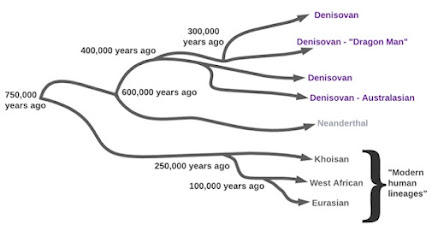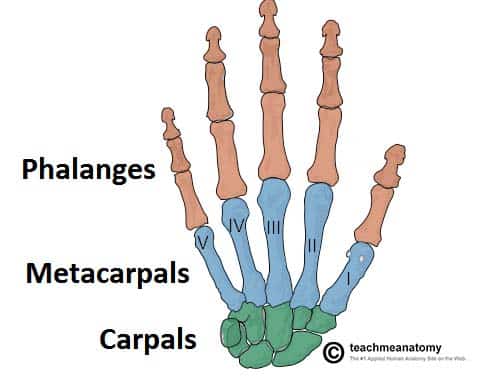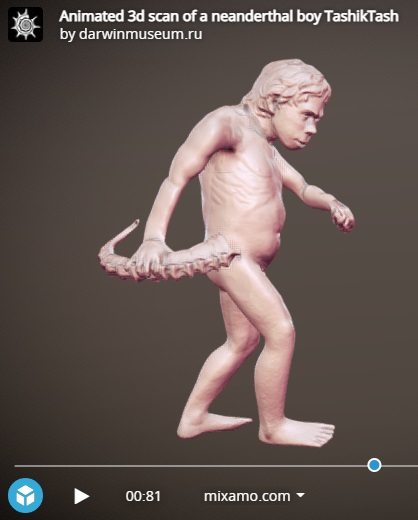Neanderthals vs Homosapiens: 5 Key Differences Explained - AZ Animals (a-z-animals.com)
The 5 Key Differences Between Neanderthals and Homosapiens
Neanderthal vs Homosapien: Skull
©Hermann Schaaffhausen – Public Domain
Easily one of the most obvious differences between neanderthals and homosapiens is the differences in their skull and facial features. Homosapiens have a typically round-shaped skull while the neanderthals’ skulls are much more elongated from front to back. This longer skull was to allow for the larger brain that neanderthals had. Additionally, neanderthals had a prominent brow ridge above the eyes. They also had a much larger nose. The nasal passageways were noticeably larger than those of homosapiens. This is thought to have been to provide an increased oxygen intake while doing strenuous activity in particularly cold environments. Neanderthals also had a less noticeable chin than homosapiens, but a more sloped forehead.
Neanderthal vs Homosapien: Height
Today, the height of homosapiens varies depending on factors such as country, living conditions, gender, race, etc. However, on average humans today are still taller than neanderthals. The expected worldwide average is 5ft 9in for men and 5ft 4in for women. Yet, neanderthals were somewhat smaller and on average most were between 5 feet and 5ft 6ins. This height difference can in part be attributed to the shorter limbs of neanderthals. Neanderthals had shorter lower legs as well as shorter lower arms than homosapiens, who have much longer limbs.
Eam : In general, shorter legs tend to make running slower than long legs. Also, shorter arms may generally be less effective at using tools than long arms.
Neanderthal vs Homosapien: Teeth
One of the greatest insights into neanderthal life comes from their teeth. Neanderthal teeth began to develop much earlier than homosapien teeth— in fact, they actually began to develop before birth. Scientists believe that this suggests that neanderthals actually had a faster growth rate than homosapiens. The other differences between their teeth include larger front teeth compared to those of homosapiens, larger roots, a large gap behind the third molar, and enlarged pulp cavities in the molars.
Eam : In general, organisms that quickly adapt to the real environment after birth are more dependent on genetic (instinctive) innate abilities than acquired learning abilities. It can mean that the large incisors and root teeth play a large role as a means of attack against hostile targets. These may mean that Neanderthals had relatively lower adaptability to various environments than Homo sapiens, that they used their teeth more actively as a means of attack for hunting, and that their food was relatively more difficult to chew.
Neanderthal vs Homosapien: Bones
Neanderthals and homosapiens also have different bones. Neanderthals had much stronger and thicker bones than homosapiens. These thicker bones include thicker metacarpals and generally a more robust disposition which was suited to their harsh lifestyle. They also had an asymmetrical humerus bone as opposed to homosapiens who have a symmetrical humerus. Neanderthals also had longer and thicker neck vertebrates which would have provided greater stability for their different shaped skulls.
Eam : The fact that Neanderthals had thicker metacaprpals and a thicker neck than Homo sapiens could mean that Neanderthals were relatively more dependent on their physical abilities than Homo sapiens.
Neanderthal vs Homosapien: Body Shape
One of the most distinctive differences between homosapiens and neanderthals is the body shape. Homosapiens—humans today have a normal-shaped chest and a narrow pelvis. Neanderthals had a barrel-shaped chest and a much wider pelvis. Their barrel-shaped chest comprising of longer and straighter ribs possibly allowed for greater lung capacity.
Neanderthals had a short, stocky build with short limbs
©IR Stone/Shutterstock.com
Eam : Professor Daniel Lieberman describes Homo sapiens as a relentless running hunter. I think Neanderthals can be dubbed relatively better close-quarters hunters than Homo sapiens.
The shape of the skull of Neanderthals is somewhere between gorillas and homo sapiens in the evolutionary flow of higher animals. It is less spherical than the skull of Homo sapiens. This means that the degree of transition to upright is lower than that of Homo sapiens. The low degree of transition to upright means that the energy consumed to support the moment caused by the head protruding forward is relatively higher than that of Homo sapiens. While the overall skeletal structure of Homo sapiens (fifth from the left in the picture below) feels like a ballet player, gorilla (third from the left in the picture below) feels like a wrestler.
Ape skeletons compared to human. A display at the Museum of Zoology, University of Cambridge. From left to right: Bornean orangutan, western gorilla, chimpanzee, human. Great ape skeletons in the Museum of Zoology, University of Cambridge - Human skeletal changes due to bipedalism - Wikipedia
The skeletal structure of Neanderthals (bottom left picture) appears to be between Homo sapiens (bottom right picture) and gorilla (third picture from the left in the top picture).

Are neanderthals and humans the same species?
Neanderthals and humans both belong to the same genus Homo but are not the same species. Neanderthals (homo neanderthalensis) and humans (homo sapiens) are two separate species. Every person alive today is homo sapien. However, the neanderthal DNA has been found to exist in some people, meaning that neanderthals and some early humans actually mated.
Did neanderthals talk?
There has been much speculation over the years as to whether neanderthals could speak or not. Despite this, recent research has now suggested that they at least had the capacity to speak a language of some sort. Speech is linked to the vocal tract structure and the amount of room at the base of the skull for the pharynx. Neanderthal skull bases have been found to be more arched than chimpanzees, but less arched than humans, which means they were capable of producing some speech, but not necessarily the same range of sounds that humans produce. Despite this, the fact that neanderthals were skilled toolmakers and proficient hunters shows that they must have been able to communicate effectively.
Eam : From the above, the inability of Neanderthals to produce sounds in the same range as humans produce could mean that the need for information exchange was relatively less than that of Homo sapiens. The low amount of information exchange can mean that the intellectual ability is not high.
Were neanderthals intelligent?
Research suggests that neanderthals were not as dim-witted as they were believed to have been. Along with the evidence that shows they must have been able to speak and communicate effectively, it has been found that neanderthals buried their dead. There is significant evidence that they marked the graves and made symbolic objects. Additionally, they were able to build and control fires, made tools, and lived in shelters. There is even evidence that they looked after family members who were sick or injured.
Were neanderthals stronger than homosapiens?
Although it is impossible to know for certain or to what extent, it is generally agreed that neanderthals were stronger than homosapiens. The shorter, stockier, and more muscular build of neanderthals naturally means that they were well suited for strength. In fact, given their tough lifestyle, it’s quite easy to assume that they were pretty strong. Neanderthals were expert hunters and fought with large animals such as mammoths in order to catch and kill them. Not only that, but even after their kill, they would have carried large quantities of meat back to their families.
Neanderthals were incredibly strong as they hunted large mammals such as mammoths
©Esteban De Armas/Shutterstock.com
What did neanderthals eat?
Neanderthals were predominantly carnivorous and hunted and ate large mammals such as mammoths, elephants, deer, woolly rhinos, and wild boars. However, preserved food found in neanderthal teeth shows that they also ate some plants and fungi.
Eam : The fact that Neanderthals had a meat-oriented eating habit could mean that their environmental adaptability was lower than that of omnivorous Homo sapiens.
Why did neanderthals become extinct?
Neanderthals became extinct around 40,000 years ago, although their DNA lives on in some humans. The exact reasons for their extinction are unclear. However, some of these reasons are thought to include increased competition from early homosapiens, as well as interbreeding with them. Moreover, the inability to cope with extreme conditions such as climate change and natural disasters is another reason they went into extintion. The general consensus is that it is unlikely to have been one specific reason that caused their extinction, but rather a combination of many factors.
Eam : When comparing Neanderthals with Homo sapiens above, short limbs, large incisors and roots, thick metacaprpals and thick neck, intermediate skull shape, stooped and crude skeletal structure, low language skills and non-agricultural society, etc. We looked at the characteristics of Several inferences can be made from these. First, short limbs, large incisors and roots, thick metacaprpals and a thick neck meant that Neanderthals were physically more powerful than Homo sapiens. However, running ability seems to have lagged behind. Second, 'the shape of the skull, which is an intermediate evolutionary stage between Homo sapiens and gorilla', a stooped and crude skeletal structure (Not reaching full Upright), and low language ability, indicate that Neanderthal's intellectual ability was inferior to that of Homo sapiens.
In conclusion, it seems that Neanderthals were slightly superior in physical abilities to modern humans, but relatively more inferior in intellectual abilities. So, survival competitiveness would have been weaker than that of Homo sapiens. However, due to the dominance of modern humans with overlapping lifestyles and territories, competition could not be avoided, so it seems that they were eventually weeded out and became extinct. Due to differences in survival competitiveness, it is likely that Neanderthals were preceded by situations similar to those of North American Indians induced by European immigrants.
But I don't see ancestral traits as the cause of 'what happened to the North American Indians'. According to the principle of neuroplasticity, we have adapted to different environments, and if the results of different environmental adaptations compete, the aggressive results tend to outperform the competition. However, it appears that Neanderthals were clearly inferior in terms of intellectual abilities.
Check out the articles below that relate to the above content!
Why did the skull evolve from an American football ball to a Soccer ball?
A New Hypothesis on Dinosaur Extinction, Moment Starvation Theory
#neanderthals #extinction #north america #indians #destiny








No comments:
Post a Comment